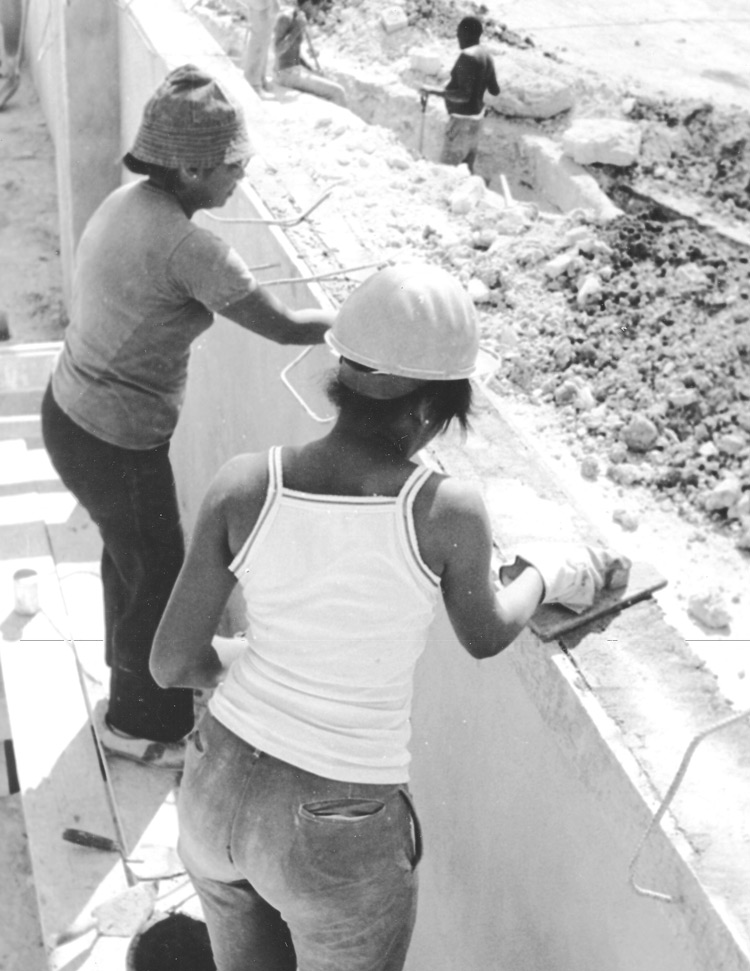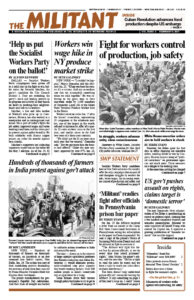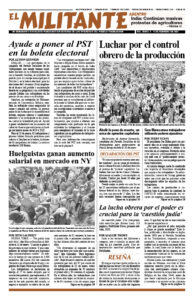One of Pathfinder’s Books of the Month for January is In Defense of Socialism: Four Speeches on the 30th Anniversary of the Cuban Revolution by Fidel Castro, its central leader. The triumph of the Cuban people on Jan. 1, 1959, opened the door to the first socialist revolution in the Americas. Castro discussed the “tremendous historical challenge,” both inside Cuba and internationally, to defend socialism against the “selfish, chaotic and inhumane capitalist system.” He responded to use of bureaucratic methods copied from the USSR by initiating the rectification process, to mobilize working people to strengthen their revolution. The excerpt is from the introduction by Mary-Alice Waters. Copyright © 1989 by Pathfinder Press. Reprinted by permission.
BY MARY-ALICE WATERS
The rectification process, begun in 1986, is the context for much of what is discussed in these pages. As Castro has explained in numerous other speeches and interviews over the last three years, the rectification process is a fundamental political reorientation. It was initiated by the leadership of the Communist Party of Cuba in response to evidence of a growing political demobilization and demoralization among Cuba’s working people. These dangerous trends were registered by increasing instances of bureaucratic mismanagement, indifference, abuse, declining productivity and work morale, the growth of corruption and fraud, and frustration over attempts to deal with such problems piecemeal. More and more, Cubans began to see money as the solution to all problems — whether providing incentives to work, or juggling the books of a state enterprise to make it appear efficient and productive. …

As Castro illustrated the problem … in November 1987, “those who advocated reactionary ideas within the revolution argued that building a day-care center was a social expense. Social expenses were no good, investing in production was good; as if those who work in the factories were bulls and cows, horses and mares, male and female mules and not human beings, not men and women with their problems, especially women with their problems. … Whenever they say no day-care center, you can be sure there is a technocratic, bureaucratic, reactionary concept at work. … It didn’t enter the technocrat’s head that day-care centers were essential to production and the services, and that housing and day boarding schools were also essential to production and the services, and that housing and day boarding schools were also essential to socioeconomic development.” …
[T]he “construction of socialism and communism,” Castro insisted, “is essentially a political task and a revolutionary task, it must be fundamentally the fruit of the development of consciousness and educating people for socialism and communism.” Building a new society, based on new property forms, new social relations, and new values cannot be accomplished by administrative measures overseen by a growing (and relatively privileged) bureaucracy. It is the work of creative and productive human beings, women and men who are conscious of what they are doing, communists who are organizing themselves and leading their fellow workers to discover what they are capable of achieving, transforming themselves in the process.
Two political measures have been central to the steps taken during the first three years of the rectification process, and references to both run through these speeches.
First, the Communist Party of Cuba has led a conscious effort to incorporate a new and younger leadership on all levels and in all organizations and institutions. Under the watchword of “renewal or death,” the first session of the third party congress in February 1986 made sweeping changes in the composition of its leadership bodies. Forty percent of those elected to the Central Committee and 50 percent of those elected to the Political Bureau were new members.
Just as important were the guidelines under which the renewal took place, with the conscious promotion of more workers, more Afro-Cubans, more women, more internationalist fighters, and more young communists. The result was a more working-class leadership, one closer in composition and experience to that of Cuba’s working people today, and one more capable of leading the profoundly revolutionary changes posed by the rectification process.
The leadership renewal begun by the party congress has been pressed forward since that time. It was deepened by the discussions around, and response to, the congress of the Union of Young Communists in 1987. It has been advanced by the demonstrated capacities of the Cuban troops and other internationalist Cuban volunteers in Africa, who in their big majority represent Cuba’s young generation. It has taken form in the volunteer youth construction contingents and work brigades that have been part of the rectification process.
The second measure central to rectification has been relaunching what in Cuba is called the minibrigade movement. … Since 1986 these Cuban working people have already put in millions of hours of volunteer labor. This genuine mass response to the minibrigade movement has made it possible to begin making inroads on problems such as the housing crisis and child-care shortage, which had been worsening at an accelerating pace for more than a decade.
In two years’ time, for example, more than 100 child-care centers were built in the city of Havana alone — more than would have been built in a century had the previous policies not been changed.
Similarly with regard to housing, progress is not being made by appealing to people to work longer and harder to make more money to meet their own personal needs while others go without decent shelter. Instead, the shortage is being addressed through mass, revolutionary, working-class action. … As Castro told a rally on July 26, 1987, the minibrigade movement has the capacity to build a new Havana. It could even build a new London or Paris, he said.

